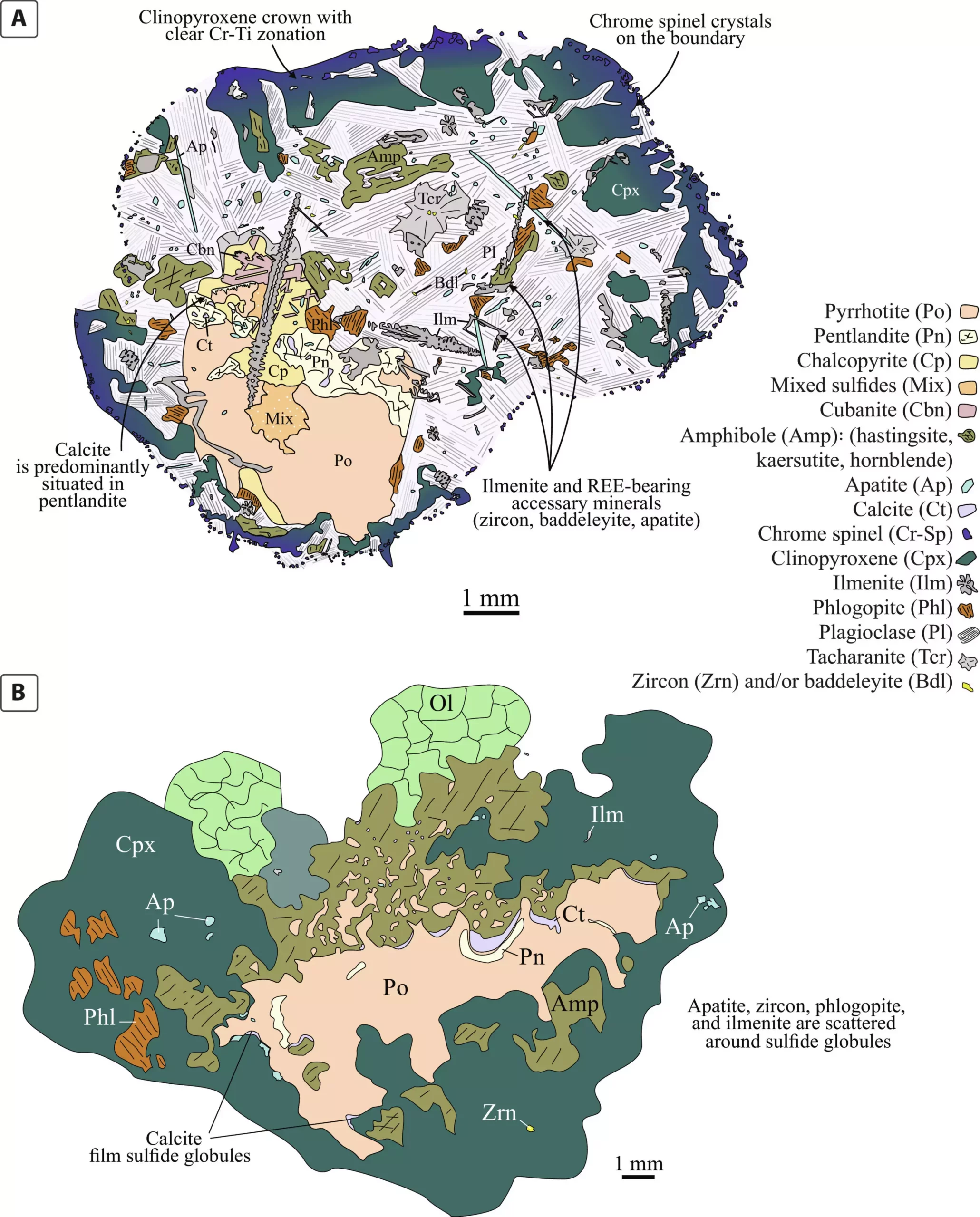The quest to responsibly extract vital green metals like nickel, platinum, and copper has long puzzled geologists and industry leaders. These metals, often buried deep within the Earth’s molten interior, are notoriously difficult to transport to surface deposits where they can be mined sustainably. Recent pioneering research from The University of Western Australia presents a groundbreaking explanation grounded in natural volcanic processes. It reveals that a specific interaction within magmatic systems acts as a highway for these valuable elements—an insight poised to reshape exploration strategies profoundly.
This study demonstrates that the secret may lie in a peculiar element of volcanic chemistry: the interplay between magmas and a mineral compound called carbonatite. Previously overlooked, carbonatite acts crucially as a carrier. It separates from the main magma, forming a distinct phase that preferentially binds with green metals due to their physical properties. This separation isn’t random; instead, it functions as a natural waypoint, enabling the metals to be transported efficiently through complex volcanic conduits. Recognizing this mechanism elevates our understanding from mere guesswork to a science rooted in natural processes, which could markedly improve how we locate and harvest these metals.
Understanding the Transport Toolbox of the Earth
At the core of these findings is an elegant analogy: comparing magmatic behavior to a simple kitchen experiment. When oil and water are mixed, they separate into distinct layers, with each phase carrying unique properties. Similarly, within powerful volcanoes, a magmatic fluid called carbonatite finds itself segregating from the surrounding magma under certain conditions. This segregation isn’t accidental; it’s a precise natural process that the researchers successfully recreated in laboratory settings. The carbonatite, bringing with it the green metals, essentially acts as a biological life jacket—an innovative metaphor that clarifies its role as a facilitator rather than a passive bystander.
This light, buoyant mineral phase can carry the heavy metals upward much more effectively than the metal particles alone. The key here is the affinity between the green metals and carbonatite, which ensures metals are “stuck” to this lighter phase, enabling their mobility through the dense volcanic environment. This process signifies a major shift from traditional thinking, which has often struggled to explain how heavy metals make their ascent through the viscous magma. It positions carbonatite not merely as a mineral component but as an active agent in the Earth’s metal transport system.
Implications for Sustainable Resource Exploration
The implications of this discovery extend well beyond academic curiosity. By understanding this natural transport mechanism, mineral explorers can prioritize volcanic sites more intelligently. Instead of extensive and ecologically disruptive drilling, geologists can focus on volcanoes exhibiting the right geological signatures that suggest the presence of these carbonatite-metal pairs. This targeted approach promises to streamline resource extraction efforts, reducing environmental footprints while increasing efficiency.
Moreover, it challenges exploration companies to think holistically about volcanic systems—not just as mineral deposits but as dynamic and complex natural processes. Recognizing the importance of carbonatite phases alters the traditional paradigm, shifting the focus towards understanding subtle magmatic interactions. As sustainable and responsible mining becomes an international priority, such insights could serve as a blueprint for more eco-conscious extraction practices aligned with Earth’s natural processes.
The study’s revelations resonate with a broader philosophical approach: aligning human industry with the Earth’s inherent systems. If we can decode and harness nature’s own transport methods, we pave the way not only for economic advancement but also for a more harmonious relationship with the planet’s geological processes.

